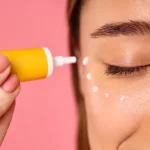Facial masks are a beloved skincare ritual cherished for their ability to nourish, rejuvenate, and transform the complexion, leaving skin radiant, hydrated, and glowing with vitality.
Whether you’re dealing with dryness, dullness, acne, or signs of aging, incorporating facial masks into your skincare routine can provide targeted solutions to address specific concerns and enhance overall skin health.
In this comprehensive guide, we’ll explore how to maximize the benefits of facial masks and elevate your skincare experience to achieve optimal results.
Understanding Facial Masks
Facial masks are skincare treatments designed to deliver concentrated ingredients to the skin, providing intense hydration, purification, exfoliation, or nourishment depending on the formulation and ingredients.
Available in various forms such as sheet masks, clay masks, gel masks, cream masks, and peel-off masks, facial masks offer versatile solutions for addressing a wide range of skin concerns and conditions.
Choosing the Right Mask for Your Skin Type
Before applying a facial mask, it’s essential to select the right type of mask that suits your skin type, concerns, and goals. Consider the following factors when choosing a facial mask:
Skin Type
Determine your skin type (dry, oily, combination, sensitive) to choose a mask that addresses your specific needs and concerns. Opt for hydrating masks for dry skin, purifying masks for oily or acne-prone skin, soothing masks for sensitive skin, and brightening masks for dull or uneven skin tone.
Skin Concerns
Identify any specific skin concerns you want to address, such as acne, dehydration, dullness, fine lines, or hyperpigmentation, and choose a mask formulated with targeted ingredients to address those concerns effectively.
Ingredients
Read the ingredient list carefully to ensure that the mask contains beneficial ingredients such as hyaluronic acid, antioxidants, vitamins, botanical extracts, and peptides that nourish, hydrate, and rejuvenate the skin without causing irritation or allergic reactions.
Prepping Your Skin for Mask Application
To maximize the effectiveness of a facial mask, it’s essential to prepare your skin properly before application. Follow these steps to ensure optimal results:
Cleanse
Start by cleansing your face to remove makeup, dirt, oil, and impurities that can block the absorption of mask ingredients and hinder their effectiveness. Use a gentle cleanser suitable for your skin type to cleanse thoroughly and pat dry with a clean towel.
Exfoliate (Optional)
Consider exfoliating your skin before applying a facial mask to remove dead skin cells and unclog pores, allowing the mask to penetrate more deeply and deliver better results. Use a gentle exfoliant or facial scrub to slough away dead skin cells and reveal smoother, brighter skin underneath.
Steam
Open up your pores and enhance the absorption of mask ingredients by steaming your face gently with warm water or a facial steamer for a few minutes before applying the mask. Steaming helps soften the skin, loosen impurities, and prepare it for optimal mask penetration.
Applying and Removing the Mask
Once your skin is prepped and ready, follow these steps to apply and remove the facial mask effectively:
Application
Apply the facial mask evenly to clean, dry skin, avoiding the delicate eye area and lips. Use clean fingertips, a brush, or a spatula to spread the mask evenly and ensure thorough coverage. Follow the instructions provided with the mask regarding application time and frequency.
Relaxation
Take this opportunity to relax and unwind while the mask works its magic. Lie down, close your eyes, and indulge in a few moments of self-care as the mask revitalizes and rejuvenates your skin.
Removal
After the recommended time has elapsed, gently remove the mask using lukewarm water or a damp washcloth. Avoid rubbing or pulling on the skin, as this can cause irritation or redness. Pat your skin dry with a soft towel and follow up with your regular skincare routine, including toner, serum, and moisturizer.
Post-Mask Skincare Routine
After removing the mask, complete your skincare routine with hydrating and nourishing products to lock in moisture and maximize the benefits of the treatment. Follow these steps to ensure your skin remains healthy, hydrated, and glowing:
Toner
Apply a gentle toner to balance the skin’s pH levels and prepare it for optimal absorption of serums and moisturizers. Choose a toner formulated with hydrating and soothing ingredients such as rose water, witch hazel, or aloe vera.
Serum
Apply a hydrating serum or treatment containing potent active ingredients such as hyaluronic acid, vitamin C, niacinamide, or peptides to replenish moisture, brighten the complexion, and address specific skin concerns.
Moisturizer
Finish your skincare routine with a nourishing moisturizer or facial oil to lock in moisture, soothe the skin, and provide long-lasting hydration. Choose a moisturizer suitable for your skin type and concerns, whether it’s lightweight and oil-free for oily skin or rich and emollient for dry skin.
Tips for Maximizing Mask Benefits
To get the most out of your facial mask experience, consider the following tips
Consistency
Incorporate facial masks into your skincare routine regularly, whether it’s once or twice a week, to maintain healthy, radiant skin over time. Consistent use can help address specific concerns and maintain optimal skin health.
Customization
Experiment with different types of masks, ingredients, and formulations to find the ones that work best for your skin type and concerns. Consider rotating between hydrating, purifying, brightening, and anti-aging masks to address a variety of skincare needs.
Multimasking
Customize your masking experience by applying different masks to different areas of your face based on their specific needs. For example, use a hydrating mask on dry cheeks, a purifying mask on oily T-zone areas, and a brightening mask on dull or uneven skin tone.
Enhancements
Enhance the benefits of facial masks by incorporating additional skincare treatments such as facial massage, lymphatic drainage techniques, or LED light therapy to boost circulation, improve product absorption, and promote skin rejuvenation.
Conclusion
Facial masks are versatile skincare treatments that offer a multitude of benefits for achieving healthy, radiant skin. By selecting the right type of mask for your skin type and concerns, prepping your skin properly, applying and removing the mask correctly, and following up with a nourishing skincare routine, you can maximize the benefits of facial masks and unlock the full potential of your skin.
Whether you’re looking to hydrate, purify, brighten, or rejuvenate your complexion, incorporating facial masks into your skincare regimen can help you achieve your skincare goals and maintain a healthy, glowing complexion for years to come.











